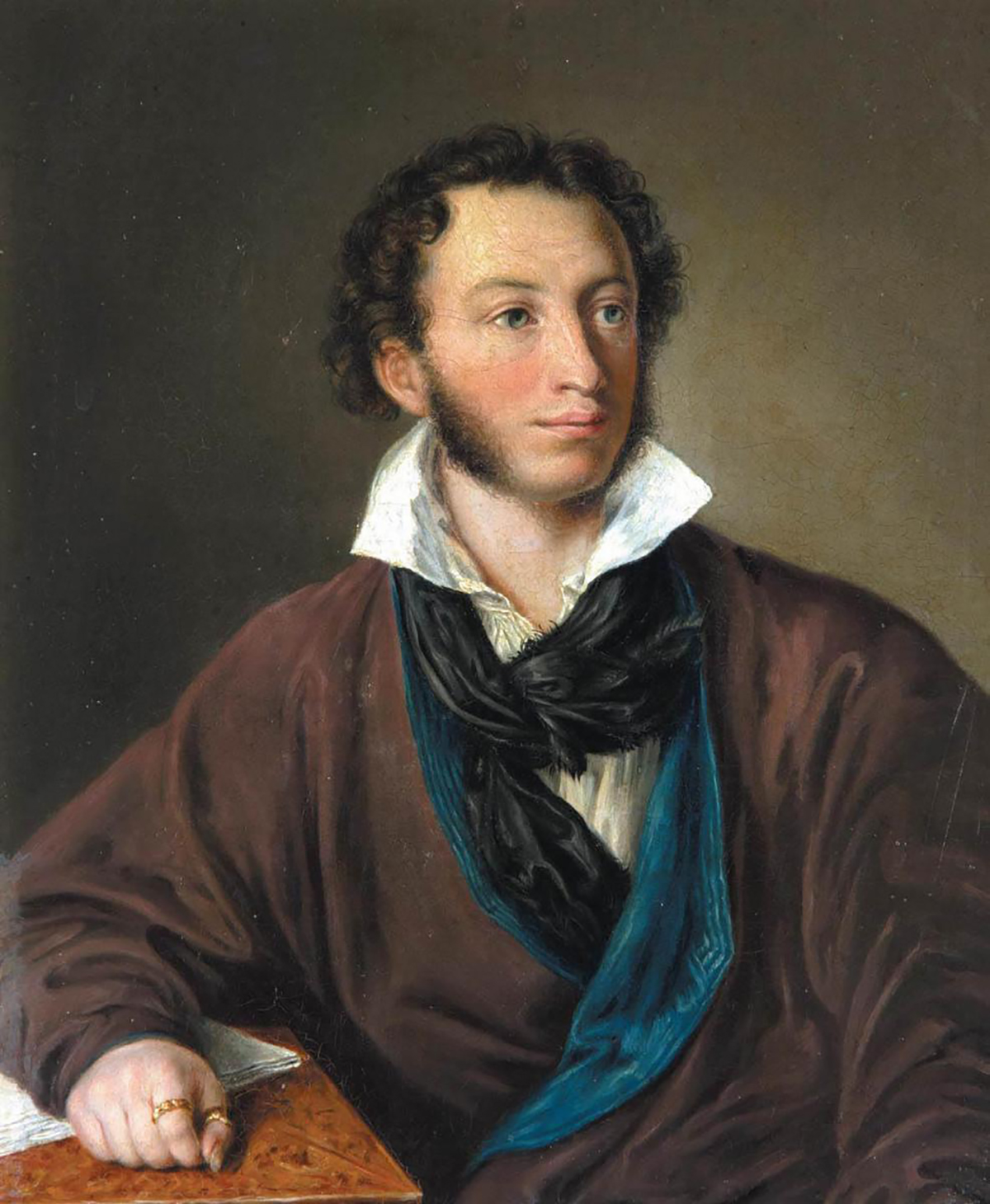Pushkin’s places in Belarus

Alexander Pushkin, great Russian poet
It is known for certain that Alexander Pushkin passed through the Belarusian provinces twice. What traces did he leave there?
Going on a spree in Mogilev
In 1820, Alexander Pushkin went into exile from St. Petersburg to Chisinau, and in 1824 he returned to the Mikhailovskoye family estate under police supervision. Both times he was going through Mogilev [the city in modern Belarus]. Rumours that the capital’s poet would come by to the provincial city were spreading quickly. Everybody was looking forward to seeing the ‘Sun of Russian Poetry’. And Pushkin did not disappoint — he was walking along the ancient streets wearing a traditional Russian shirt and boots. He had an officer’s greatcoat over his shoulders and a yarmulke on his head. The poet was usually followed by a servant dressed up as a Tatar boy. Officials and most of the officers ignored Pushkin’s arrival, but ordinary people and the military of the lower ranks gave him a magnificent reception, in gratitude to which Pushkin read poetry to them until four o’clock in the morning.According to the testimonies of contemporaries that have been preserved, the genius liked Mogilev. He was especially impressed by the city architecture, the outfits of the locals and their eloquence. The confirmation of these words is easy to find in his poem Boris Godunov: ‘Drink, but do not forget yourself’, ‘Let us drink a cup to the tavern keeper!’ — Pushkin’s characters speak in the Belarusian manner.
 In the village of Telusha, the genius' admirers gather for the annual poetry
In the village of Telusha, the genius' admirers gather for the annual poetryDiscovering real Dubrovsky
“I am not what you assume. I am not Frenchman Deforge, I am Dubrovsky,” says the main character of the famous novel to his beloved Masha.Few people know, though, that the romantic robber had a prototype — Byelorussian Pavel Ostrovsky. A 22-year-old nobleman lost his estate and set out to rob the rich to help the poor. However, unlike the literary character, the real leader of the gang was caught by the police. This story was told to Pushkin by his friend Pavel Nashchokin, who often visited Vitebsk Region, where Ostrovsky was actually imprisoned. The most amazing thing is that the young robber managed to escape!
 St. Nicholas Church in the village of Telusha
St. Nicholas Church in the village of TelushaAsking for inspiration
 This monument is a gift from the Russian Military Historical Society to the people of Brest
This monument is a gift from the Russian Military Historical Society to the people of Brest
Another impressive statue of Pushkin is found in Vitebsk. The realistic figure of the poet is quite small, yet he seems to have huge stone wings behind his shoulders. The iconic bowler hat and a cloak casually draped over one shoulder give the impression that Pushkin is in a hurry somewhere.
Looking for rebel Pugachev
Have you heard anything about the schismatic settlement of Vetka [the town in modern Belarus, Gomel Region]? They say it was there that Don Cossack Yemelyan Pugachev — the leader of the peasant uprising — was hiding. In any case, that is exactly what is said in Pushkin’s poem.Nowadays, the small town of Vetka, located in the border area between Belarus and Russia, is one of the most popular regional centres for tourists. There are plenty of sights to see there. It boasts a Red square, colourful houses adorned with carved shutters, and a unique Museum of Old Believers and Belarusian Traditions named after Shklyarov. In the 17th century, after the church reforms of Patriarch Nikon, at least forty thousand Old Believers fled there in search of refuge. Moreover, they brought with them rare books, sacred images, and jewellery, all of which have been preserved in the museum.
So what about Pugachev? It is true that he was there. However, there is no accurate information as to where exactly and on what occasion. Therefore, each tour guide presents their own interpretation of the trails associated with him.
 For centuries, Vetka has preserved the spirit of Russian merchant culture
For centuries, Vetka has preserved the spirit of Russian merchant culture  The image of Natalya Vorontsova-
The image of Natalya Vorontsova-Velyaminova clearly reveals features
of the famous granddad
Visiting the genius’ granddaughter
Residents of Bobruisk willingly share with tourists the story of the poet’s direct heiress who once lived in their town. Many locals can even show the place where her house was located, and lead you along the chestnut alley that she laid out.Natalya Vorontsova-Velyaminova, Pushkin’s granddaughter, was known for her beauty and philanthropic nature. She did not shy away from communicating with peasants and tried to help them in every possible way. St. Nicholas Church now stands in the village of Telusha near Bobruisk — the woman is buried just behind it. She also helped to open a school for rural children. Therefore, it is not surprising that a museum dedicated to her life has been established in the village.
By Sofia Arsenyeva




